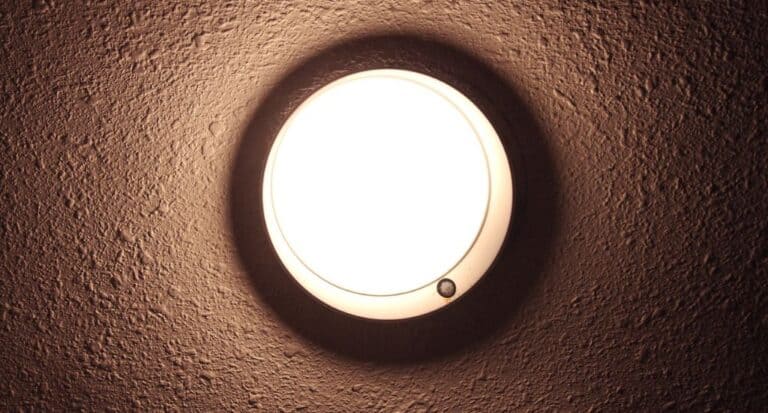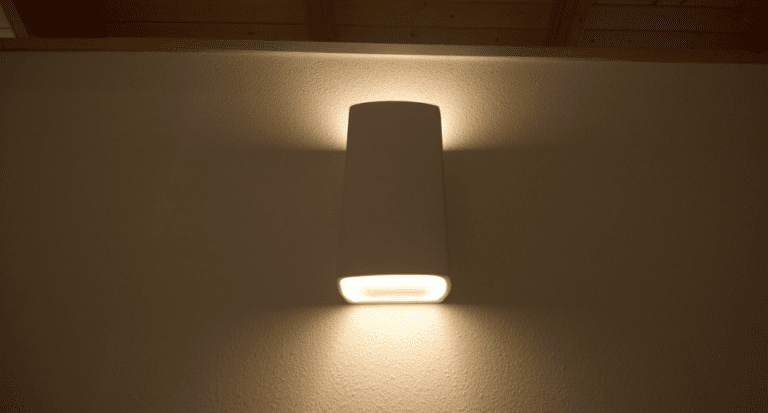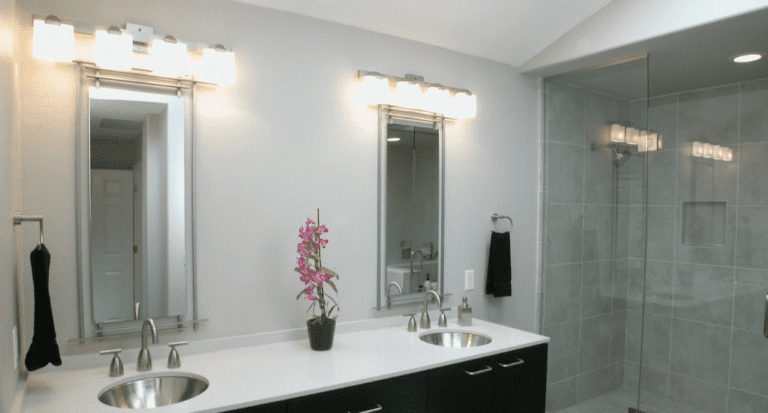What is the Best Wattage for Indoor Lighting?
If you are stuck with choosing the right wattage for your Indoor lighting, here is a guide that will help you in deciding. So, What is the best wattage for indoor lighting?
Interior lighting has different sections where different wattages can be used. But as a standard thing, 60W power is enough for better lighting and moderate energy saving. However, people choose to go with lower wattage for mostly used areas and higher wattage for decorative rooms.
As an enthusiastic Interior DIY guy, I always wanted to try different lighting with different wattages for every room. If you are not sure and your interior designer is forcing you to go with higher wattages, you will end up with too much lighting and high electricity bills.
If you want to try low-wattage bulbs, you have to compromise with lighting intensity. So, to clear your confusion I have tried different wattage lighting, and here is my experience that would clear your doubts.
Factors to consider When Choosing Indoor Lighting wattage
When it comes to choosing the right wattage for indoor lighting, there are several factors to consider to ensure that you achieve the right level of brightness, energy efficiency, and functionality. Here are some important factors to consider before deciding the wattage power:
1 Room size
When contemplating the appropriate wattage for your indoor lighting, it is crucial to take into account the size of the room illuminated. Generally speaking, smaller rooms necessitate a lower wattage in comparison to their larger counterparts as they require less luminosity to be properly illuminated.
To illustrate, a petite bathroom may only necessitate 5-10 watts of lighting, whereas a more sizeable living room could necessitate 10-20 watts or even more.
2 Ceiling height
The height of a room can have an impact on the amount of electrical power required to provide sufficient illumination indoors. If the distance between the floor and ceiling is substantial, then a greater amount of electrical power would be necessary to produce the desired level of brightness within the room.
If your ceiling has a considerable height, then you may need to consider the usage of light bulbs with higher wattage or additional light fixtures to achieve the desired level of brightness.
3 Purpose of the room
When selecting the wattage of indoor lighting, it’s essential to take into account the intended purpose of the room. Different rooms necessitate varying lighting requirements based on their intended use.
For instance, a kitchen necessitates bright and focused lighting to illuminate countertops and workspaces effectively. In contrast, a bedroom might require gentler and more relaxing ambient lighting to aid in sleep and relaxation.
4 Personal preference
When selecting indoor lighting wattage, personal preference is another crucial element to consider. Certain individuals may have a preference for brighter lighting to enhance visibility, whereas others may prefer softer lighting to establish a more soothing ambiance.
It’s vital to choose lighting that corresponds with your personal tastes to guarantee that you feel content and at ease with the level of brightness in your surroundings.
5 Environmental impact
Lastly, it’s crucial to take into account the ecological impact of your interior illumination alternatives. Opting for energy-efficient illuminants, such as Light Emitting Diodes (LEDs) or Compact Fluorescent Lamps (CFLs), can assist in mitigating your power usage and lowering your energy expenditure.
Furthermore, selecting illuminants with a lengthier lifespan can aid in diminishing waste generation and saving you money over an extended period.
By considering these factors, you can select the appropriate wattage for your indoor lighting requisites, guaranteeing that your surroundings are adequately illuminated, energy-efficient, and cozy.
What is the Recommended Wattage for Different Rooms

It’s crucial to select the appropriate wattage for distinct chambers in your domicile to establish an ideal milieu and ambiance. Although it’s subjective to individual preferences and the intended function of the space, there are broad principles for each space in your abode.
The wattage and right lighting intensity will add aesthetic appeal to any room. Especially for living and kids’ rooms, the light intensity and effect on sleep also play a vital role. Wait, what?
Lighting effect on sleep? Yes. I have written a detailed article on “Can interior lighting affect sleep?“. Give it a read before choosing the higher wattage.
1 For Living Room (20W to 75W)
The living room is the space where you unwind and entertain visitors, hence, it’s crucial to elect the appropriate wattage to produce a cozy and welcoming atmosphere. For a ceiling that is 10 feet by 12 feet, a minimum of 600 lumens or 75 watts is requisite.
However, for more extensive living rooms, one can choose from 1,500-3,000 lumens or 23-50 watts per square meter, depending on the expanse of the room and the preferred luminosity.
One of the prime selections for the living room is to utilize an amalgamation of lighting fixtures, such as overhead lights and table lamps. Overhead lights can be employed for broad illumination, while table lamps can be utilized for specific tasks or to create a more laid-back ambiance.
For a more energy-efficient alternative, one can opt for Light Emitting Diodes (LEDs) or Compact Fluorescent Lamps (CFLs), which are more energy-efficient and have a lengthier lifespan.
2 Kitchen (25W to 50W)
The kitchen is the heart of any house. Well, some people think having low-intensity bulbs might make the kitchen look cool. But as My requirement, I would like to see every detail in the kitchen area while cooking. So, I will opt for a brighter light.
The prescribed luminosity wattage for the cooking area is elevated in contrast to other chambers in your residential premises due to the requirement of brighter luminance for culinary preparations and cooking activities.
A culinary area with dimensions of 10 feet by 12 feet necessitates a minimum of 1,000-3,000 lumens or 100-200 watts, while bigger culinary spaces require 3,000-6,000 lumens or 50-100 watts per square meter.
The optimal approach for culinary areas would be the application of an array of light fixtures, specifically overhead lighting, pendant lighting, and under-cabinet lighting. Overhead lighting functions as a general light source, while pendant and under-cabinet lighting may serve as task-specific lighting, primarily for culinary preparation and cooking activities.
For an eco-friendly lighting option, LED or CFL bulbs are ideal, as they provide greater energy efficiency and extended lifespan.
3 Bathroom (10W to 50W)
A bathroom is a place where you get ready for the day ahead. It should have bright and clear lighting so that you can see well while grooming and practicing good hygiene. The recommended wattage for the bathroom is higher than in other rooms because you need more light for these tasks.
For a bathroom that measures 5 feet by 8 feet, you should have at least 1,500-4,000 lumens or 23-60 watts. For larger bathrooms, you may want to use 4,000-8,000 lumens or 60-100 watts per square meter.
One of the preeminent alternatives for the restroom is deploying zenithal and vanity illumination. Zenithal illumination is applied for general illumination, while vanity illumination is utilized for exacting activities, such as grooming and applying cosmetics.
In favor of a more environmentally friendly option, one can opt for light-emitting diode bulbs or compact fluorescent bulbs, which are more energy-efficient and possess a prolonged lifespan.
4 Bedroom (10W to 50W)
The sleeping quarters are the locus of respite and recuperation, therefore, necessitating diffused and cushy illumination. Light emission in the bedroom is recommended to be less than that of other domiciliary compartments since a subdued radiance is fundamental in fostering a pacifying and pleasurable milieu.
For an area of 10 feet by 12 feet, a lower limit of 1,500-4,000 lumens or 23-60 watts is requisite. However, for more expansive sleeping spaces, you may opt for 3,000-6,000 lumens or 50-100 watts per square meter.
Table lamps, floor lamps, and wall sconces are among the superlative alternatives for the bedroom. Table and floor lamps may be utilized for reading or specific tasks, whereas wall sconces can cater to general lighting. For a more energy-efficient choice, LED bulbs or CFL bulbs may be preferred since they are more energy-efficient and have a lengthier lifespan.
It should be underscored that the ambiance of the bedroom is influenced by the color temperature of the lighting. Warm light, which is at 2700K-3000K, engenders an intimate and serene milieu, while cool light, which is at 5000K-6500K, generates a luminous and invigorating milieu. Neutral light, which is at 3500K-4000K, is optimal for mission-oriented rooms, such as the kitchen and bathroom.
Here is the breakdown table for lighting options, energy efficiency, and recommended wattage.
| Lighting Option | Energy Efficiency | Lifespan | Cost | Color Temperature | Recommended Wattage |
|---|---|---|---|---|---|
| LED | Very high | Very long | High | 2700K-6500K | Living room: 10-20W Kitchen: 10-20W Bathroom: 5-10W Bedroom: 5-10W |
| CFL | High | Long | Low | 2700K-6500K | Living room: 13-23W Kitchen: 13-23W Bathroom: 7-13W Bedroom: 7-13W |
| Halogen | Low | Short | High | 2700K-3000K | Living room: 25-45W Kitchen: 25-45W Bathroom: 10-20W Bedroom: 10-20W |
Certainly, determining the optimal wattage for lighting in different rooms of your abode hinges on a myriad of elements, including the expanse of the chamber, the height of the ceiling, the room’s function, and your individual inclinations.
Nonetheless, adhering to the customary rules of thumb can assist you in producing a desirable ambiance and vibe in each room. Furthermore, opting for energy-efficient lighting alternatives like LED and CFL bulbs not only lets you cut down on energy costs but also curtails your ecological footprint.
Is there a standard wattage for indoor lighting?
There is no standard wattage for indoor lighting due to the varying factors that affect it. Nevertheless, illumination specialists frequently suggest the use of 10 to 20 watts per square foot of living space, which is subject to the intended use of the room and the luminary apparatus utilized.
Conclusion
Selecting an appropriate wattage for your indoor lighting necessitates thoughtful contemplation of multiple facets, comprising the dimensions of the room, the elevation of the ceiling, the room’s intended purpose, your personal predilections, and the ecological aftermath.
By adhering to the recommended wattage guidelines for various chambers and exploring alternative lighting preferences, you can establish a snug and welcoming milieu in your abode while simultaneously diminishing your energy expenditures and environmental consequences.
Keep in mind to pick lighting fixtures and bulbs that align with your requisites and tastes, and do not hesitate to experiment with assorted lighting alternatives to actualize an ideal ambiance and atmosphere in your domicile.






